Valorization of post-extraction residues - analysis of the influence of new feed additives with micronutrients on eggs quality parameters
Bartosz Ligas, Grzegorz Izydorczyk, Katarzyna Mikuła, Dawid Skrzypczak, Damian Konkol, Mariusz Korczyński, Anna Witek-Krowiak, Katarzyna Chojnacka
Poultry Science
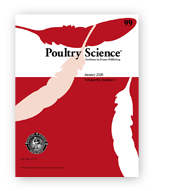 This paper presents attempts to enrich hens eggs with ions of copper, manganese and zinc through the use of new feed additives (19 mg Cu2+; 124 mg Mn2+ and 85 mg Zn2+) such as biomass of alfalfa and goldenrod after extraction with supercritical carbon dioxide enriched with microelements via biosorption. Mechanical parameters of eggs (shell thickness and strength, Haugh unite), hen's laying performance, microelements content in albumen and yolk were examined and the transfer factor from feed to eggs was determined. The highest transfer of microelements content in albumen occurred in the group of hens fed with enriched goldenrod in a 100% dose (daily dose of microelements from biomass; Cu2+ 106%; Mn2+ 104%; Zn2+ 104% more in comparison to the inorganic salt group), while the highest yolk enrichment with microelements manifested itself for hens fed with enriched goldenrod in a 50% dose (daily dose of microelements from biomass; Cu2+ 32%; Zn2+ 22% more in comparison to the inorganic salt group). These groups also had the highest total microelements concentration. Mechanical properties of eggs varied insignificantly during the trial. Production parameters did not differ statistically among all experimental group. Eggs produced with need additives had better organoleptic parameters than fed with conventional premixes, which is why they were preferred by the respondents. The presented technology allows obtaining low-cost feed materials characterized by high bioavailability of components. The produced feed additives can serve as potential material for biofortification of eggs with nutrients.
This paper presents attempts to enrich hens eggs with ions of copper, manganese and zinc through the use of new feed additives (19 mg Cu2+; 124 mg Mn2+ and 85 mg Zn2+) such as biomass of alfalfa and goldenrod after extraction with supercritical carbon dioxide enriched with microelements via biosorption. Mechanical parameters of eggs (shell thickness and strength, Haugh unite), hen's laying performance, microelements content in albumen and yolk were examined and the transfer factor from feed to eggs was determined. The highest transfer of microelements content in albumen occurred in the group of hens fed with enriched goldenrod in a 100% dose (daily dose of microelements from biomass; Cu2+ 106%; Mn2+ 104%; Zn2+ 104% more in comparison to the inorganic salt group), while the highest yolk enrichment with microelements manifested itself for hens fed with enriched goldenrod in a 50% dose (daily dose of microelements from biomass; Cu2+ 32%; Zn2+ 22% more in comparison to the inorganic salt group). These groups also had the highest total microelements concentration. Mechanical properties of eggs varied insignificantly during the trial. Production parameters did not differ statistically among all experimental group. Eggs produced with need additives had better organoleptic parameters than fed with conventional premixes, which is why they were preferred by the respondents. The presented technology allows obtaining low-cost feed materials characterized by high bioavailability of components. The produced feed additives can serve as potential material for biofortification of eggs with nutrients.
DOI:10.1016/j.psj.2021.101416
Medical Peat Waste Upcycling to Carbonized Solid Fuel in the Torrefaction Process
Kacper Świechowski, Małgorzata Leśniak, Andrzej Białowiec
Energies
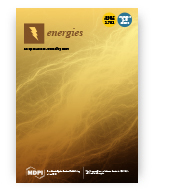 Peat is the main type of peloid used in Polish cosmetic/healing spa facilities. Depending on treatment and origin, peat waste can be contaminated microbiologically, and as a result, it must be incinerated in medical waste incineration plants without energy recovery (local law). Such a situation leads to peat waste management costs increase. Therefore, in this work, we checked the possibility of peat waste upcycling to carbonized solid fuel (CSF) using torrefaction. Torrefaction is a thermal treatment process that removes microbiological contamination and improves the fuel properties of peat waste. In this work, the torrefaction conditions (temperature and time) on CSF quality were tested. Parallelly, peat decomposition kinetics using TGA and torrefaction kinetics with lifetime prediction using macro-TGA were determined. Furthermore, torrefaction theoretical mass and energy balance were determined. The results were compared with reference material (wood), and as a result, obtained data can be used to adjust currently used wood torrefaction technologies for peat torrefaction. The results show that torrefaction improves the high heating value of peat waste from 19.0 to 21.3 MJ × kg−1, peat main decomposition takes place at 200–550 °C following second reaction order (n = 2), with an activation energy of 33.34 kJ × mol−1, and pre-exponential factor of 4.40 × 10−1 s−1. Moreover, differential scanning calorimetry analysis revealed that peat torrefaction required slightly more energy than wood torrefaction, and macro-TGA showed that peat torrefaction has lower torrefaction constant reaction rates (k) than wood 1.05 × 10−5–3.15 × 10−5 vs. 1.43 × 10−5–7.25 × 10−5 s−1.
Peat is the main type of peloid used in Polish cosmetic/healing spa facilities. Depending on treatment and origin, peat waste can be contaminated microbiologically, and as a result, it must be incinerated in medical waste incineration plants without energy recovery (local law). Such a situation leads to peat waste management costs increase. Therefore, in this work, we checked the possibility of peat waste upcycling to carbonized solid fuel (CSF) using torrefaction. Torrefaction is a thermal treatment process that removes microbiological contamination and improves the fuel properties of peat waste. In this work, the torrefaction conditions (temperature and time) on CSF quality were tested. Parallelly, peat decomposition kinetics using TGA and torrefaction kinetics with lifetime prediction using macro-TGA were determined. Furthermore, torrefaction theoretical mass and energy balance were determined. The results were compared with reference material (wood), and as a result, obtained data can be used to adjust currently used wood torrefaction technologies for peat torrefaction. The results show that torrefaction improves the high heating value of peat waste from 19.0 to 21.3 MJ × kg−1, peat main decomposition takes place at 200–550 °C following second reaction order (n = 2), with an activation energy of 33.34 kJ × mol−1, and pre-exponential factor of 4.40 × 10−1 s−1. Moreover, differential scanning calorimetry analysis revealed that peat torrefaction required slightly more energy than wood torrefaction, and macro-TGA showed that peat torrefaction has lower torrefaction constant reaction rates (k) than wood 1.05 × 10−5–3.15 × 10−5 vs. 1.43 × 10−5–7.25 × 10−5 s−1.
DOI:10.3390/en14196053
Case report laparoscopy-assisted pre-pubic urethrostomy as a palliative procedure for resection of distal urethral tumor in a female dog
Przemysław Prządka, Bartłomiej Liszka, Sonia Lachowska, Stanisław Dzimira, Rafał Ciaputa, Joanna Tunikowska, Łukasz Juźwiak, Paweł Kucharski, Julia Rudno-Rudzińska, Zdzisław Kiełbowicz
BMC Veterinary Research
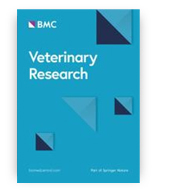 Background This paper presents the first described case of laparoscopy-assisted prepubic urethrostomy and laparoscopic resection of a tumor of the distal part of the urethra in a female dog as a palliative treatment. Case presentation An intact, 11 -year-old, mixed breed female dog, weighing 15 kg, was admitted with signs of urinary obstruction and difficulty with catheterization. Vaginal, rectal, and endoscopic examinations revealed a firm mass in the pelvic cavity at the level of the pelvic urethra. Ultrasound and computed tomography examination showed enlargement of the urethral wall (5.5 cm width and 3 cm thick), which was significantly restricting the patency of the urethra. The lesion affected only the distal part of the urethra without the presence of local or distant metastatic changes. The affected portion of the urethra was laparoscopically removed while performing pre-pubic urethrostomy with laparoscopy. The patient regained full consciousness immediately after the end of anesthesia, without signs of urinary incontinence. Histopathological examination of the removed urethra revealed an oncological margin only from the side of the bladder. In the period of 2.5 months after the procedure, the owner did not notice any symptoms that could indicate a postoperative recurrence, which was diagnosed three months after the procedure. Conclusions Pre-pubic urethrostomy can be successfully performed with the assistance of laparoscopy. The use of minimally invasive surgery will allow, in selected cases, removal of the urethral tumor, and in inoperable cases, to perform a minimally invasive palliative pre-pubic urethrostomy.
Background This paper presents the first described case of laparoscopy-assisted prepubic urethrostomy and laparoscopic resection of a tumor of the distal part of the urethra in a female dog as a palliative treatment. Case presentation An intact, 11 -year-old, mixed breed female dog, weighing 15 kg, was admitted with signs of urinary obstruction and difficulty with catheterization. Vaginal, rectal, and endoscopic examinations revealed a firm mass in the pelvic cavity at the level of the pelvic urethra. Ultrasound and computed tomography examination showed enlargement of the urethral wall (5.5 cm width and 3 cm thick), which was significantly restricting the patency of the urethra. The lesion affected only the distal part of the urethra without the presence of local or distant metastatic changes. The affected portion of the urethra was laparoscopically removed while performing pre-pubic urethrostomy with laparoscopy. The patient regained full consciousness immediately after the end of anesthesia, without signs of urinary incontinence. Histopathological examination of the removed urethra revealed an oncological margin only from the side of the bladder. In the period of 2.5 months after the procedure, the owner did not notice any symptoms that could indicate a postoperative recurrence, which was diagnosed three months after the procedure. Conclusions Pre-pubic urethrostomy can be successfully performed with the assistance of laparoscopy. The use of minimally invasive surgery will allow, in selected cases, removal of the urethral tumor, and in inoperable cases, to perform a minimally invasive palliative pre-pubic urethrostomy.
DOI:10.1186/s12917-021-03024-3
An archaeology of ‘Death Valley’, Poland
Dawid Kobiałka, Mikołaj Kostyrko, Filip Wałdoch, Katarzyna Kość-Ryżko, Joanna Rennwanz, Marta Rychtarska, Daniel Nita
Antiquity
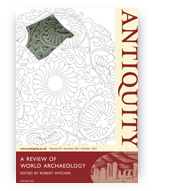 This article presents the initial results of a multidisciplinary project aimed at documenting evidence of the genocide that took place on the northern outskirts of Chojnice, Poland, in the autumn of 1939 and in January 1945.
This article presents the initial results of a multidisciplinary project aimed at documenting evidence of the genocide that took place on the northern outskirts of Chojnice, Poland, in the autumn of 1939 and in January 1945.
DOI:10.15184/aqy.2021.109
An international survey on residential lighting: Analysis of winter-term results
Rengin Aslanoğlu, Jan Kazak, Sepideh Yekanialibeiglou, Piotr Pracki, Begüm Ulusoy
Building and Environment
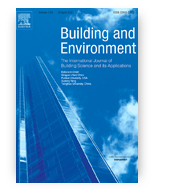 By conducting an international survey on residential lighting, a great variety of data showing the differences and similarities in lighting conditions among Poland, Turkey, Sweden and the U.K. were collected which provided an overall perspective for raising the standards of luminous environments. A total of 500 participants (125 respondents from each country- 47.6% females, 51.2% males, and 1.2% who did not wish to specify gender) provided detailed self-assessments of the lighting conditions in their living areas. The study identified interrelated factors associated with residential lighting using descriptive statistics, correlation coefficient functions and thematic analysis. As the survey results showed, the satisfaction with daylighting quality depends on daylighting sufficiency, daylighting uniformity, and number of sunlight hours (i.e., sunlight exposure), view-out and ratio of windows in the living area. Moreover satisfaction with artificial lighting quality depends on artificial lighting sufficiency, artificial lighting uniformity, artificial lighting brightness, and artificial lighting color rendering index. Overall, the findings of the study showed the potential factors that can be used to effectively change the day- and artificial lighting in residential areas, leading to a sustainable and better lighting environment.
By conducting an international survey on residential lighting, a great variety of data showing the differences and similarities in lighting conditions among Poland, Turkey, Sweden and the U.K. were collected which provided an overall perspective for raising the standards of luminous environments. A total of 500 participants (125 respondents from each country- 47.6% females, 51.2% males, and 1.2% who did not wish to specify gender) provided detailed self-assessments of the lighting conditions in their living areas. The study identified interrelated factors associated with residential lighting using descriptive statistics, correlation coefficient functions and thematic analysis. As the survey results showed, the satisfaction with daylighting quality depends on daylighting sufficiency, daylighting uniformity, and number of sunlight hours (i.e., sunlight exposure), view-out and ratio of windows in the living area. Moreover satisfaction with artificial lighting quality depends on artificial lighting sufficiency, artificial lighting uniformity, artificial lighting brightness, and artificial lighting color rendering index. Overall, the findings of the study showed the potential factors that can be used to effectively change the day- and artificial lighting in residential areas, leading to a sustainable and better lighting environment.
DOI:10.1016/j.buildenv.2021.108294









